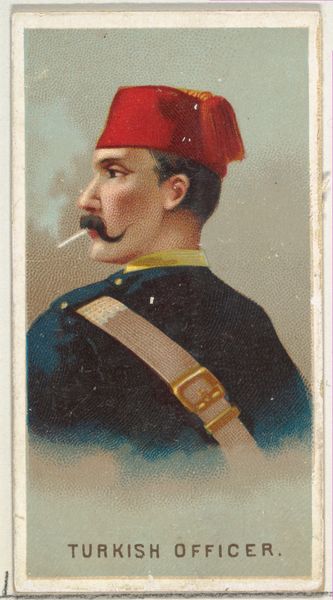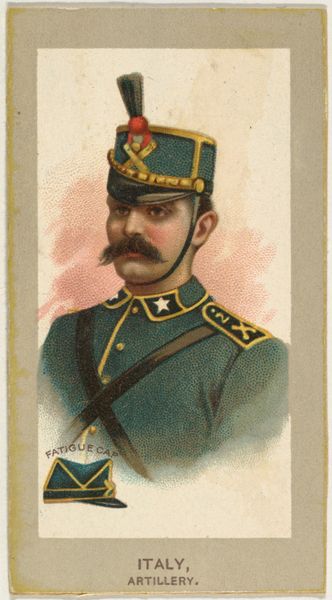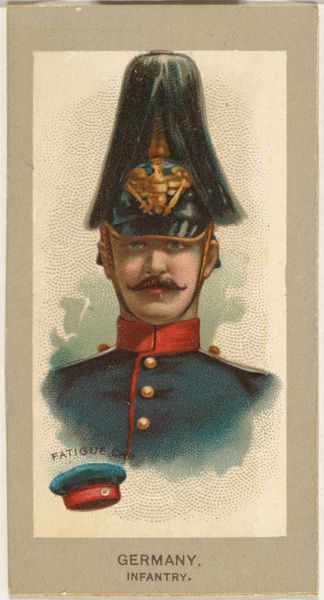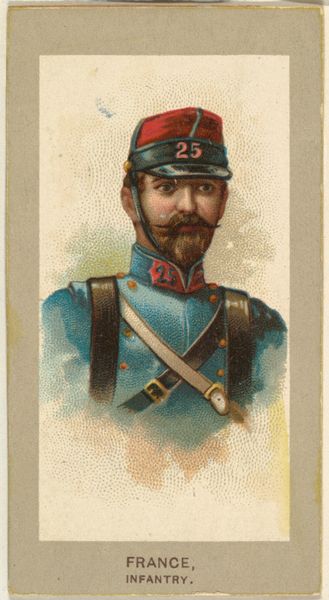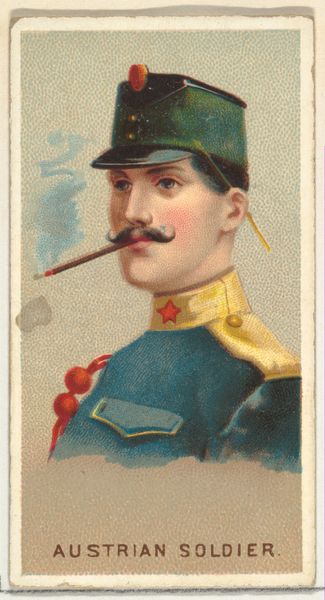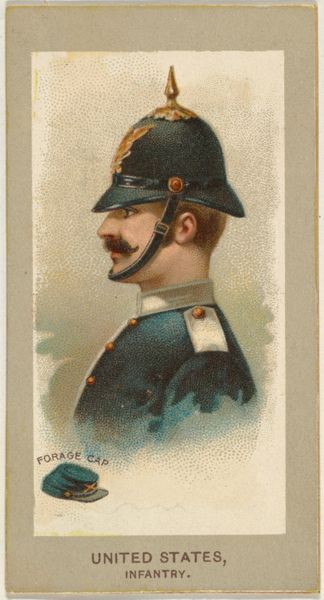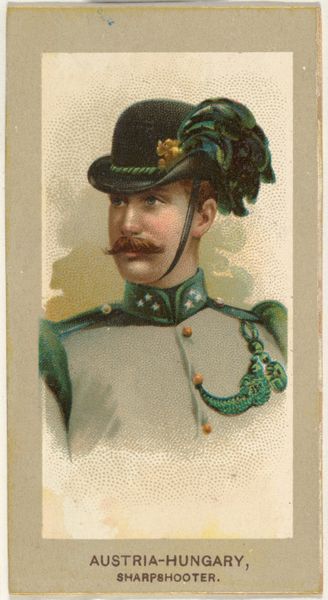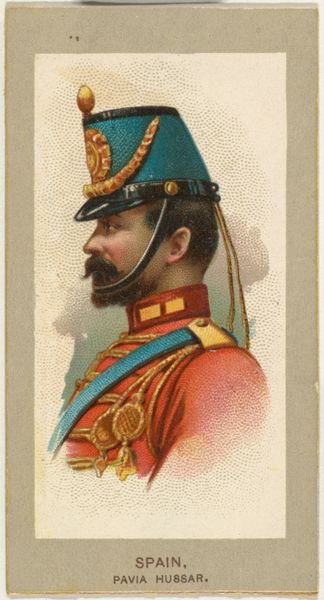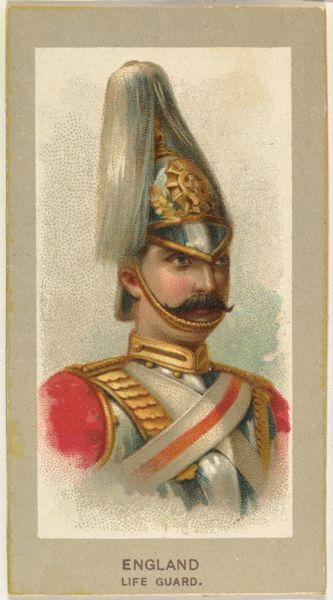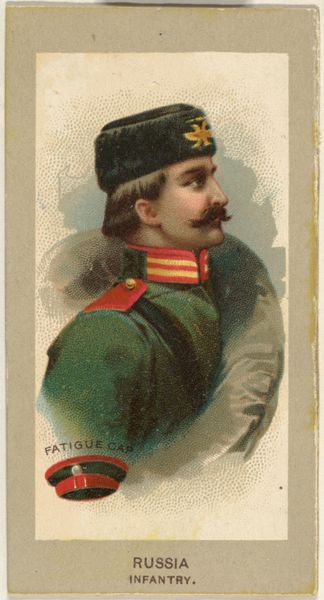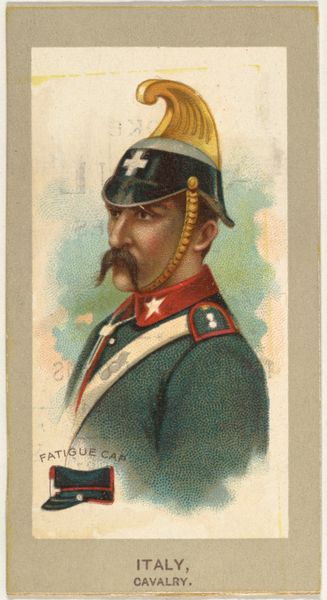
Infantry, Spain, from the Military Uniforms series (T182) issued by Abdul Cigarettes 1881
0:00
0:00
drawing, print
#
drawing
# print
#
caricature
#
portrait reference
#
framed image
#
animal portrait
#
men
#
animal drawing portrait
#
portrait drawing
#
watercolour illustration
#
portrait art
#
watercolor
#
fine art portrait
Dimensions: Sheet: 3 3/16 × 1 3/4 in. (8.1 × 4.4 cm)
Copyright: Public Domain
Curator: Right, let's turn our attention to "Infantry, Spain," a chromolithograph print created around 1881. It was part of a series of military uniforms issued by Abdul Cigarettes, and it’s currently held here at the Metropolitan Museum. Editor: My first thought? Oh, the melodrama! It’s theatrical, like a character plucked straight from an operetta. The rigid pose, that meticulously sculpted moustache – everything's screaming performative masculinity. Curator: Well, military uniforms themselves are inherently performative. Beyond practical concerns, they're loaded with symbolism. Think about the colors – red, blue and gold were specifically selected for their historic ties to the Spanish crown and military prowess. This isn't just any soldier, this is an idealized representation of Spanish infantry. Editor: And that's exactly what feels so staged. He's an emblem, not a person. Even the medium feels like part of the fabrication – watercolor gives it a soft, almost romantic feel, at odds with the reality of warfare. It almost glamorizes this person who probably dealt with daily unspeakable situations of war. Curator: It's important to remember the context, these were promotional items designed to sell cigarettes. The aim wasn’t necessarily historical accuracy or brutal realism. These cards fueled a culture of both casual patriotism and an appetite for exotic images, connecting consumers to faraway lands and military power, however fanciful. Editor: Fanciful indeed! But there’s something about the artifice that’s so telling. It reflects the social values and desires of the time, this carefully crafted illusion of strength and valor, reduced to a trinket tucked inside a cigarette pack. I guess in that respect the card achieved its goals if we are still commenting on it. Curator: Precisely. This seemingly simple image serves as a time capsule, encapsulating national identity and consumer culture in late 19th-century Spain. Editor: Who knew such a tiny, mass-produced image could contain so many layers of cultural meaning? An ordinary soldier now is a potent, pretty caricature.
Comments
No comments
Be the first to comment and join the conversation on the ultimate creative platform.
